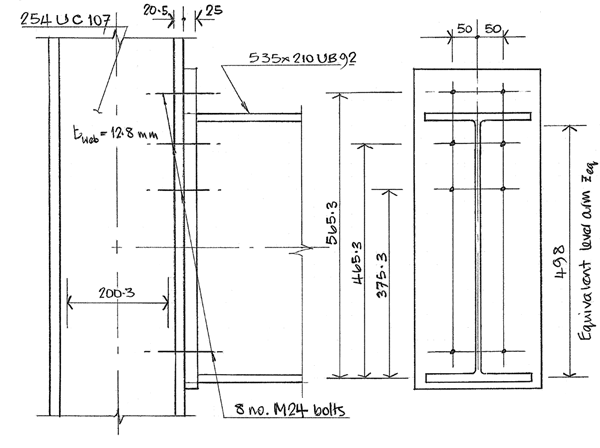News
President’s Column: Nov/Dec 2023
There is a simple question that relates to established UK steelwork design practice that is becoming increasing difficult to answer … when is a steelwork connection not just a connection?
The NSSS describes a connection as “The design of bolts, welds, cleats, plates and fittings required to provide an adequate load path between the end of a member and the component it connects to”.
This appears to be a simple and easy to follow description, however we are probably at fault of introducing an amount of confusion by often referring to connections as “Joints”. This terminology is used in the title of BS EN 1993-1-8:2005 “Design of Joints” and also in the titles of the commonly used SCI Publications P358 Simple Joints to Eurocode 3 and P398 Moment-Resisting Joints to Eurocode 3 (often referred to as The Green Books).
So, are connections and joints simply two different words to describe the same thing? In my opinion they aren’t and here’s why I think so.
As described in the NSSS, a connection is the point where two members meet. One is the supporting member and the other is the supported member, so for example a beam connected to a column flange. It doesn’t matter whether this beam is pinned or fixed providing that the material and fixings that are provided to connect the members together (usually a fin plate or end plate) have adequate strength and / or stiffness to safely transfer the loads from the supported member into the supporting member.
At this point I would suggest that, if not already done, you should read the very informative technical article written by Graham Couchman of the SCI and published in the October issue of this magazine, relating to the danger of designing over-strength connections.
And so, if we then add another supported member to the opposite side of the column, a further connection is made between the beam and the column flange which (again) must have adequate strength and / or stiffness to safely transfer the applied loads.
But who is then responsible for checking the capacity of the column section between these two “connections” to safely transfer the appropriate loads across the supporting member? Is it part of the connection / joint design that is commonly regarded as the responsibility of the Steelwork Contractor, or should it fall within the member capacity checks that are usually the responsibility of the Structural Engineer?
And as the connection becomes more complex, with additional members converging onto the same central node, then the question becomes even more difficult to answer.
Well, help is on the way …
A new design guide, compiled by a consortium of Structural Engineers, Main Contractors, Steelwork Contractors, and experts from the SCI and BCSA, has been completed to answer these difficult questions and is now ready for publication.
SCI P445 – Steelwork Joint Design; Process & Information aims to clarify the responsibilities within these types of connections and also advises on the processes by which we currently find it increasingly difficult to design connections or joints of this nature.
This design guide is due for publication towards the end of November, at which time I strongly suggest that you acquire a copy to assist in any discussion or debate about the responsibilities of connection designs, however simple or complex they may be.
Gary Simmons
BCSA President














